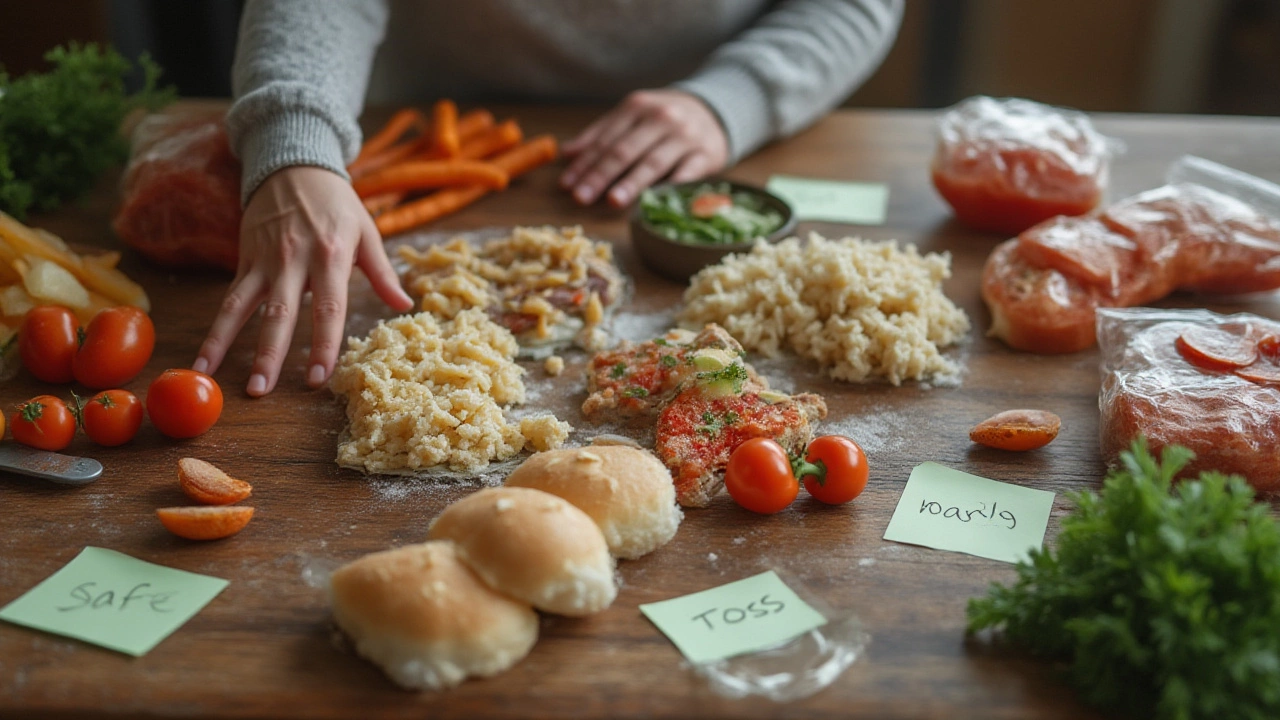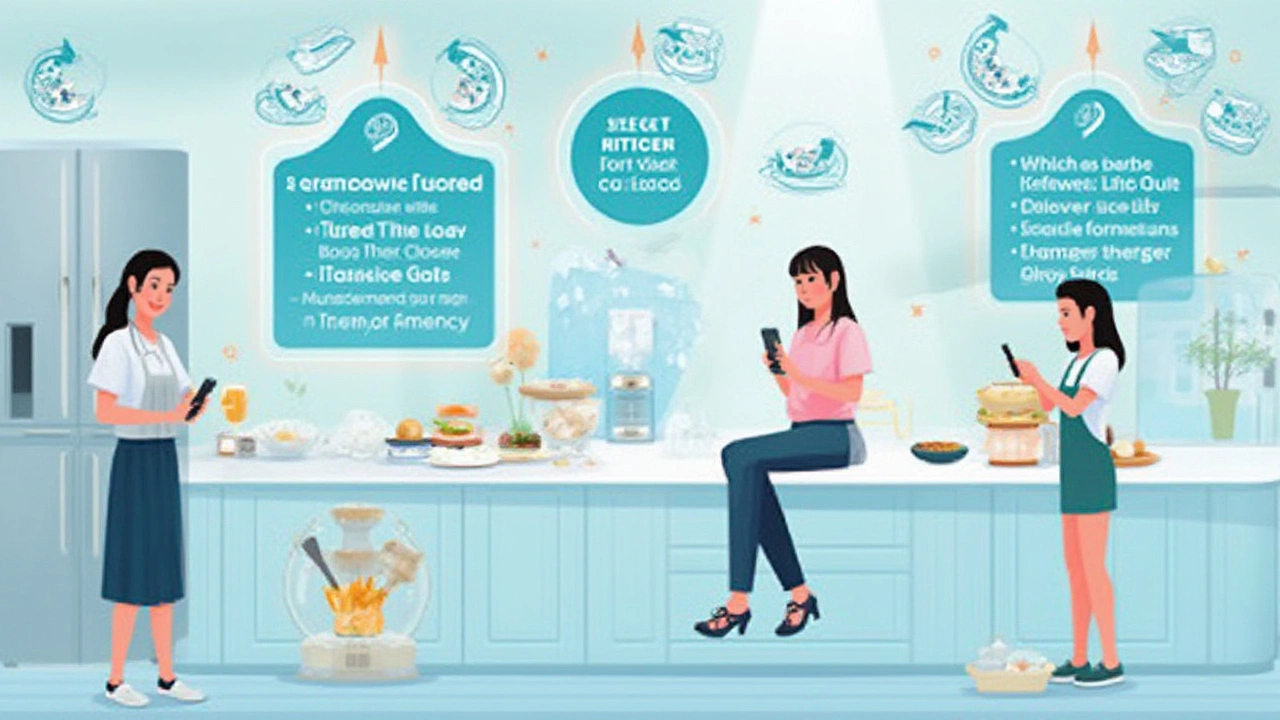You open your freezer and—bam—everything feels slightly thawed. The ice cream is soft, meat is sweating, and the veggies are limper than a forgotten lettuce leaf. Few things spark panic in a home quite like a freezer breakdown, especially when you've just stocked up on groceries. But before you start throwing everything out, thinking it's all gone bad, let’s break down what really happens when your freezer stops working and what you can actually do to save your food (and your sanity).
How Long Does Food Stay Safe in a Broken Freezer?
The first thing you need to know: time is your best friend and worst enemy in this situation. According to the USDA, a full freezer will keep food frozen for about 48 hours if you don’t open the door. A half-full freezer lasts about 24 hours. Why does a full freezer keep cold longer? Because all those frozen items huddle together, keeping each other cold, kind of like penguins braving winter. However, if your freezer’s only got a pint of ice cream and a lonely bag of peas, you have a much smaller window.
Most people think food starts to spoil the moment it starts to thaw. That’s not exactly true. As long as your food stays below 40°F (4°C), it’s usually safe. Once things creep above that point, bacteria can throw a party. But, frozen food isn’t like a carton of milk—you’ve got some wiggle room. The texture or taste might suffer, sure, but safety is about the temperature and whether food has fully thawed and warmed to room temp.
One thing folks often miss is the power of a closed freezer door. Every peek you take to ‘just check’ lets cold air escape, helping your food thaw faster. Keep that door shut unless you have a plan and are working quickly. Tape a note on the door reminding everyone to keep out. When our freezer died last summer, Adele stuck a giant “STOP—WE’RE SAVING THE CHICKEN” sign on the handle, which actually worked (for once).
A freezer loaded with a mix of meats, veggies, and prepared meals can seem doomed, but if you catch the problem quickly, you’ve got options. If power’s only out for a few hours, most frozen food is fine. But overnight? That’s when you need to get serious about checking temps and making decisions.
Spotting the Good, the Bad, and the Sketchy: How to Check If Frozen Food Is Still Safe
So your freezer stopped working—and things are starting to thaw. Now what? Time to put on your detective hat. Start by checking the temperature inside your freezer. If you don’t already have a freezer thermometer, this is one of those tiny gadgets that pays off big time. If the food is still icy or partly frozen and the freezer is at 40°F (4°C) or colder, the food is probably fine to refreeze or eat (though the texture might be off for delicate items like ice cream or bread).
For meats—think chicken, beef, pork—the danger is all about bacteria. If these have ice crystals or are still cold to the touch, you can likely save them. Do they smell or look weird? Any sliminess? Toss them. Raw or cooked seafood? Be extra strict; if there’s any thawing and it smells the tiniest bit off, don’t risk it.
Vegetables and bread survive partial thawing better than meats and dairy. You may notice freezer-burned spots—those pale, dry patches aren’t dangerous, but they’ll make the food taste strange. We once saved a batch of broccoli by making soup. For dairy, especially soft cheeses and ice cream, you’re better off playing it safe—if those thaw completely, just say goodbye. Bacteria love that stuff, and the texture turns to mush anyway.
Wondering about prepared meals and leftovers? Mixed foods (think casseroles, pizza, or frozen dinners) are risky if fully thawed. If you’re lucky and they’re still partly frozen, cook and eat them soon. If not, it’s safer to toss them. Cutting corners on food safety isn’t worth the stomachache or trip to the doctor.
Here’s a quick guide to help you make the call:
- Meats and seafood: If still icy or cold, can be cooked or refrozen. Fully thawed and above 40°F? Toss it.
- Vegetables: Safe to refreeze if still icy. If thawed but kept below 40°F, cook and use soon.
- Bread: Even if it thaws, it’s usually fine to refreeze but may be drier.
- Ice cream/frozen treats: If soft or melted, quality is gone—toss them.
- Mixed or cooked dishes: If in the danger zone (over 40°F for more than two hours), don’t risk it.

What To Do During a Freezer Breakdown: Practical Tips That Work
So your freezer’s warm and you don’t know how long the food has been thawing. Act fast, but don’t panic. Here’s the game plan that’s saved me (and my groceries) more than once.
- Keep the door closed. Every second counts. Don’t just stand there with the door open, reminiscing about last year’s frozen turkey.
- If you’ve got a cooler and ice packs—or can borrow some from a neighbor—move your most valuable or perishable items into that. Meat, seafood, and delicate items come first.
- Grab a freezer thermometer if you have one. If not, try to check for ice crystals or if foods are still cold. Don’t just guess—cold to the touch means 40°F or lower.
- If the breakdown is due to a power outage, and the rest of the house is cold, you might set your frozen items outside if temperatures are below freezing. Ziplock bags or sealed containers help prevent any wildlife or curious pets from having a feast.
- Call local friends or family for fridge/freezer space—neighbors can be lifesavers. We once had a “deep freeze party” where two families saved everything by combining coolers and freezers.
- Got no place to store things? Cook up what you can. Thawed meat and veggies become a massive chili or stew. Freeze leftovers again after cooking, once your freezer is fixed.
- If it’s unclear how long the food has been thawed—longer than two hours above 40°F?—don't take chances, especially with raw meat, seafood, and dairy.
- Take note of what you throw out for insurance purposes. Documenting losses with photos and a list helps if you can make a claim.
If the cause is a freezer malfunction (not a power cut), your first step is to unplug it, clean up any water, and troubleshoot the issue. Common culprits are broken thermostats, failed compressors, or door seals. Most repairs are best left to an appliance pro unless you’re super handy. If your model is old, repairs might cost more than just replacing the unit.
Refreezing Food: Is It Safe? Does It Ruin the Taste?
The million-dollar question after a freezer breakdown: Can you safely refreeze thawed food? Short answer—if it still contains ice crystals or is 40°F (4°C) or colder, refreezing is usually safe. The long answer? You might notice a change in texture and flavor, especially in items like meats, desserts, and delicate vegetables. But it’s better than risking illness. The main safety concern with refreezing is whether the food was exposed to the ‘danger zone’—between 40°F and 140°F (4°C to 60°C)—for more than two hours. If not, pop it back in.
With meat, you’ll notice a loss of juiciness and tenderness once you refreeze and cook it. Veggies like peas and green beans may get a little mushy or watery. Bread can get crumbly. Ice cream? Never refreeze—unless you want a weirdly icy, frosty mess. If you have kids, they’ll notice and revolt.
Don’t refreeze foods that were completely thawed and warm to the touch. Pathogens multiply fast once things get above 40°F. If you’re unsure, throw it out. When in doubt, take a photo and text it to someone you trust for a second opinion (bonus points if they’re paranoid about food safety).
This is where having a plan matters. When you first spot a freezer malfunction, triage your food. Organize by how perishable items are and what’s most important. Salvage what you can, cook or share what must go soon, and compost what’s truly lost. And if you’ve dealt with kids clamoring for that drippy tub of cherry swirl, trust me, nobody wants to eat ice cream that's melted and frozen again.

Preventing Future Freezer Nightmares
If you’ve made it through a freezer breakdown, you probably never want to do it again. Here’s how to stack the deck in your favor.
- Invest in a cheap freezer thermometer and keep it where you can see it. If the temp climbs, you’ll catch problems early—sometimes before food even starts to thaw.
- Don’t overload your freezer or leave it half-empty. Keeping it reasonably full maintains cold temps longer during outages or malfunctions.
- Label what you freeze with dates and, if you’re feeling ambitious, use-by recommendations. Rotate older items to the front so you don’t end up with mystery meat or ancient bags of peas.
- Every few months, defrost and clean your freezer—don’t wait until things smell weird. Look for signs of trouble, like ice buildup, strange noises, or door seal issues.
- If your appliance makes clicking or humming noises, struggles to reach freezing temps, or leaks, call a pro before it fully breaks down.
- During storms or planned power cuts, turn your thermostat to its coldest setting a few hours before so food holds temperature longer. Keep some reusable freezer packs on hand as an emergency backup.
- Create a meal plan that uses up your freezer food every 3-6 months to avoid overstocking—the fewer things you lose to a breakdown, the better.
And finally, don’t forget to check your warranty or home insurance policies. Some will cover spoiled food if you can document the breakdown and your losses.
Freezer trouble can feel like a crisis, but knowing how long food stays safe, what to save, and when to say goodbye takes away much of the stress. Next time your freezer’s on the fritz, take a breath, follow these steps, and you might just avoid the heartbreak of a wasted grocery haul. And if you find a new recipe for ‘thawed-mystery-surprise casserole,’ let me know—I think Adele’s still trying to forget the last one I made.


